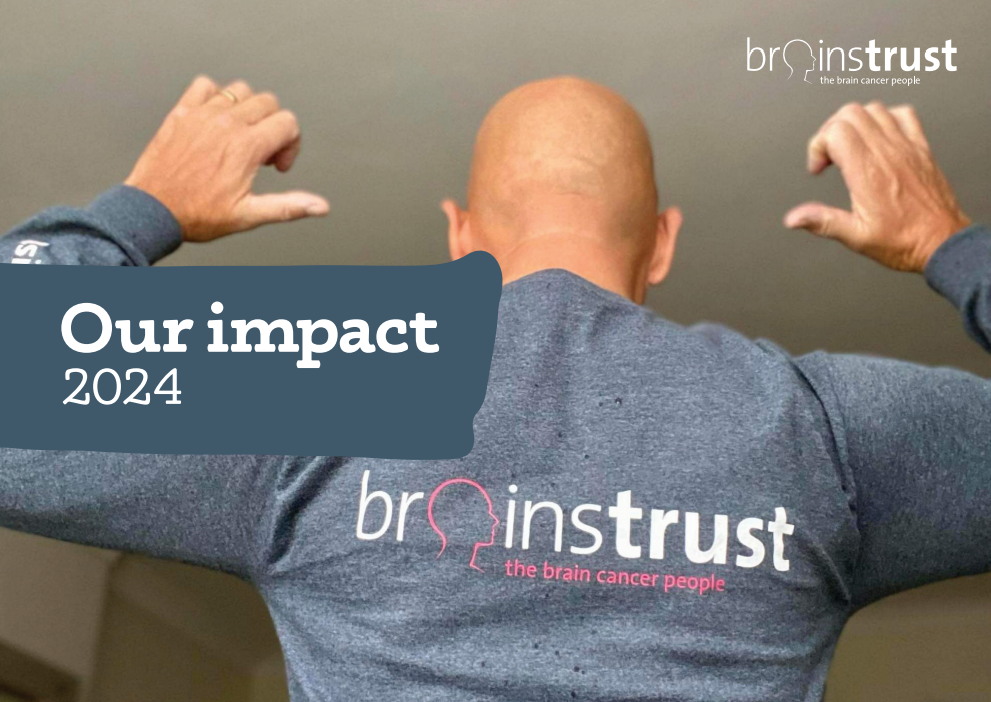
As the landscape of cancer data becomes increasingly complex—and increasingly commercial—the voice of patients, your voice, must be at the centre of every development. Patient data is the backbone of research: it helps us understand how brain tumours behave,
how treatments perform in the real world, and how people experience care across the system. It’s driving advances in personalised medicine, shaping clinical trials, and informing the allocation of resources. Without it, progress stalls. But if this data is to be meaningful—and used ethically and effectively—it must be shaped by those it represents.
Crucially, people have differing needs, wishes and values when it comes to how their data is collected, shared and used—and these differences must be respected if we are to build a truly patient-centred system.
“We know there isn’t a singular position taken by patients and caregivers on the topic of data privacy; some want to choose case by case where their data is used in research, and some want to only have to say yes once and know that it’s easily accessible to relevant studies. This is important nuance to consider when making large-scale decisions, and another reason that patient involvement in decision making is crucial to individual projects.” – Adam Thomson, Involvement Officer, brainstrust .
brainstrust’s leadership in this space began in 2012, when we partnered with the NCIN and Public Health England (as was) to ensure that brain tumour patients had a say in how their data was collected, interpreted and applied. This early work laid the foundations for more transparent, patient-inclusive data practices and helped establish the principle that lived experience must guide research. This commitment has deepened over time. We’ve worked with NDRS and Cancer Research UK to co-develop the Cancer Patient Information Portal – a tool designed to give patients greater visibility and control over their registry held data.
Through our collaboration on NHS England’s Get Data Out programme, we’ve helped ensure that high quality, disease specific cancer data—particularly for less common cancers like brain tumours, is made accessible and useful to researchers, clinicians and, crucially, patients. 
By unlocking data that had previously been buried in aggregated statistics, Get Data Out gives people living with brain cancer clearer insights into outcomes, treatments, and the state of play in their disease area.
“Our position as a leading authority on patient voice in brain tumour data is rooted in over a decade of working hand-in-hand with the community. We listen first, and act second—whether it’s shaping how data is collected and used, or helping patients and carers navigate a health system that can feel impenetrable.” Helen Bulbeck – Director of Services and Policy, brainstrust.
But the environment is changing. We’re seeing a proliferation of public-private partnerships, and new technologies that offer both promise and peril. Data can drive breakthroughs—but it can also erode trust if patients are not seen as partners.
The path forward demands courage, transparency, and accountability. Most of all, it demands that the people most affected by brain tumours have a seat at the table. brainstrust is committed to making sure they do. Only by embedding the patient voice in every decision can we ensure that brain tumour data drives not just innovation, but better lives. We continue to support the Get Data Out programme – read more here Read more about our work with public-private collaborations like with Flat Iron and the NHS here.
On June 24th in Leeds there is a major National Patient Data Day conference. In anticipation of this event please read Dr Helen Bulbeck’s latest blog on this topic here. Within the blog she discusses the core principle that must underpin the emerging public/private data management partnerships.
Find out more about the National Disease Registration Service and how your cancer data improves experiences, outcomes and lives – read more here










